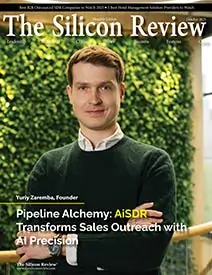>>
Industry>>
Construction>>
Tesla’s Modular Housing Disr...Tesla’s Modular Housing Disrupts Construction Models as Urban Demand Skyrockets
The Silicon Review
09 April, 2025
Tesla’s prefabricated eco-homes have seen a staggering 300% surge in orders as U.S. cities grapple with a deepening housing crisis—signaling a systemic shift in automated construction.
Tesla’s entry into the housing sector is no longer a quiet experiment—it’s a disruptive force reshaping how cities think about shelter, speed, and sustainability. In Q1 2025, the company reported a 300% increase in demand for its modular housing units, driven by urban centers in crisis and municipal governments racing to deliver affordable, scalable solutions. Tesla’s prefabricated eco-homes are not just structures—they are a product of vertically integrated automation. Each unit is produced through a controlled, factory-based system that mirrors Tesla’s automotive and battery production workflows. This means lower build times, predictable quality, and repeatable cost efficiencies—exactly the kind of industrial discipline the fragmented housing sector has historically lacked.
Unlike traditional construction, which remains labor-intensive and vulnerable to supply chain shocks, Tesla’s model offers controlled scalability. Smart insulation, solar integration, and pre-installed IoT systems are embedded during the production phase, reducing post-build customization and enhancing energy performance. With local governments loosening zoning restrictions to accommodate fast-deploy solutions, Tesla’s tech-enabled homes are finding a foothold in places where legacy builders have struggled to meet timelines or budgets. This surge in demand reflects more than just consumer interest—it underscores a readiness in the construction industry to adopt industrial automation at scale. The modular movement, often sidelined as niche, now has a validation loop with real market traction and supply chain maturity.
For developers, investors, and municipal planners, Tesla’s model offers a live case study in turning automation into rapid, responsive housing deployment. In a market burdened by inertia and cost overruns, the signal is clear: automation is not a future ideal—it’s a current necessity, and Tesla may be setting the blueprint.


_2025-11-17_06-38-14.webp)

 (1)_2025-10-21_13-35-14.webp)

_2025-10-02_10-21-48.webp)